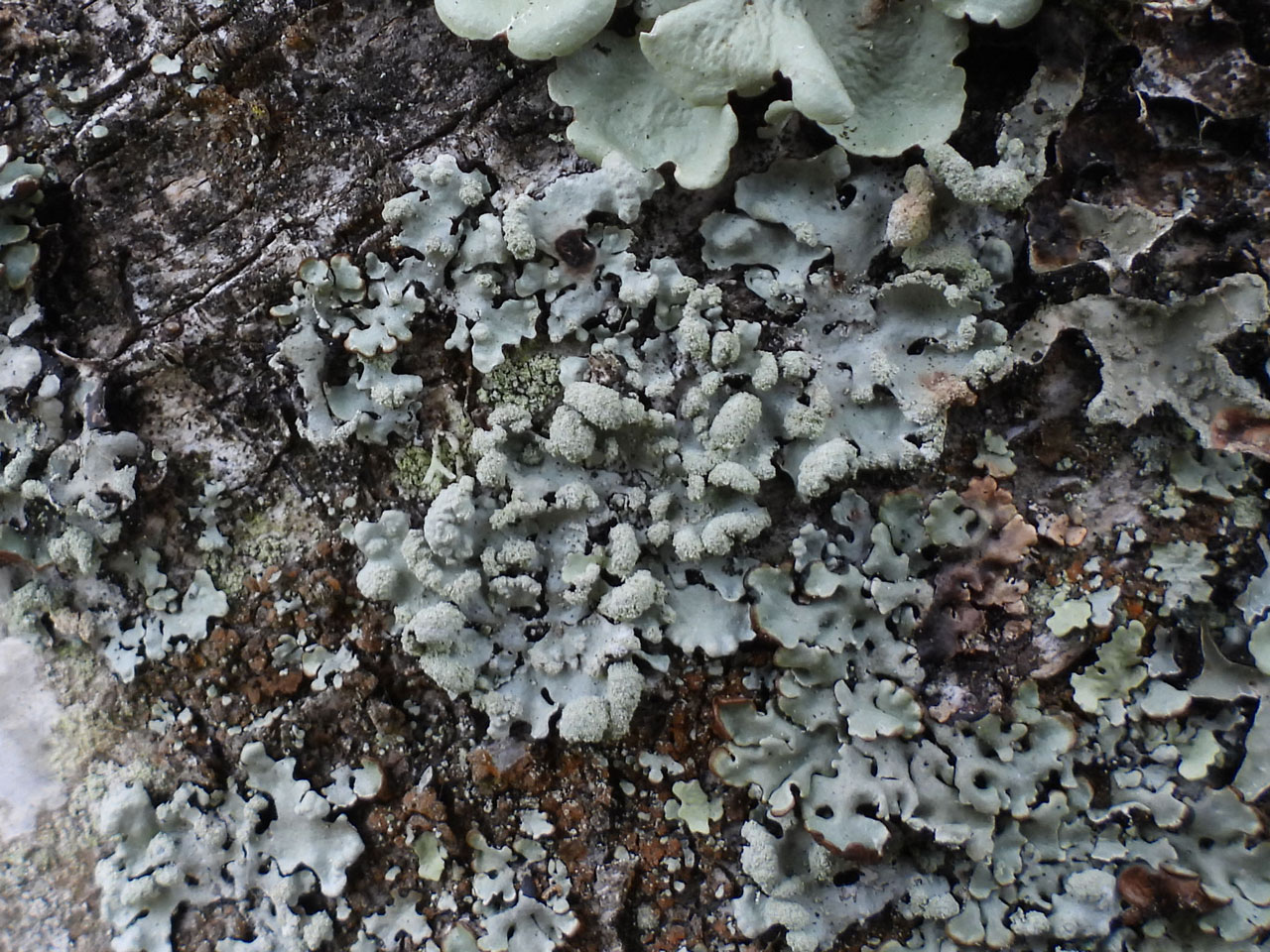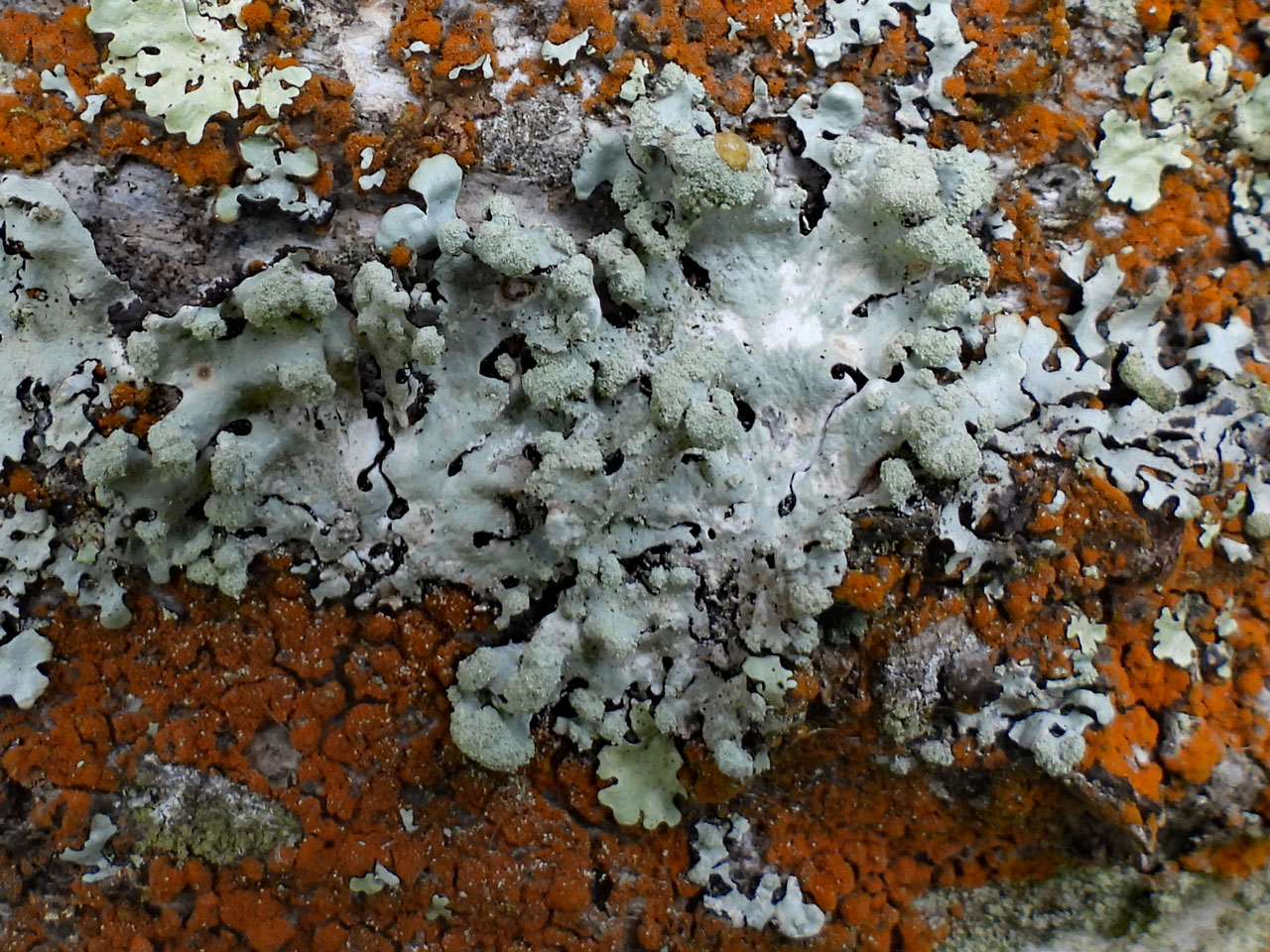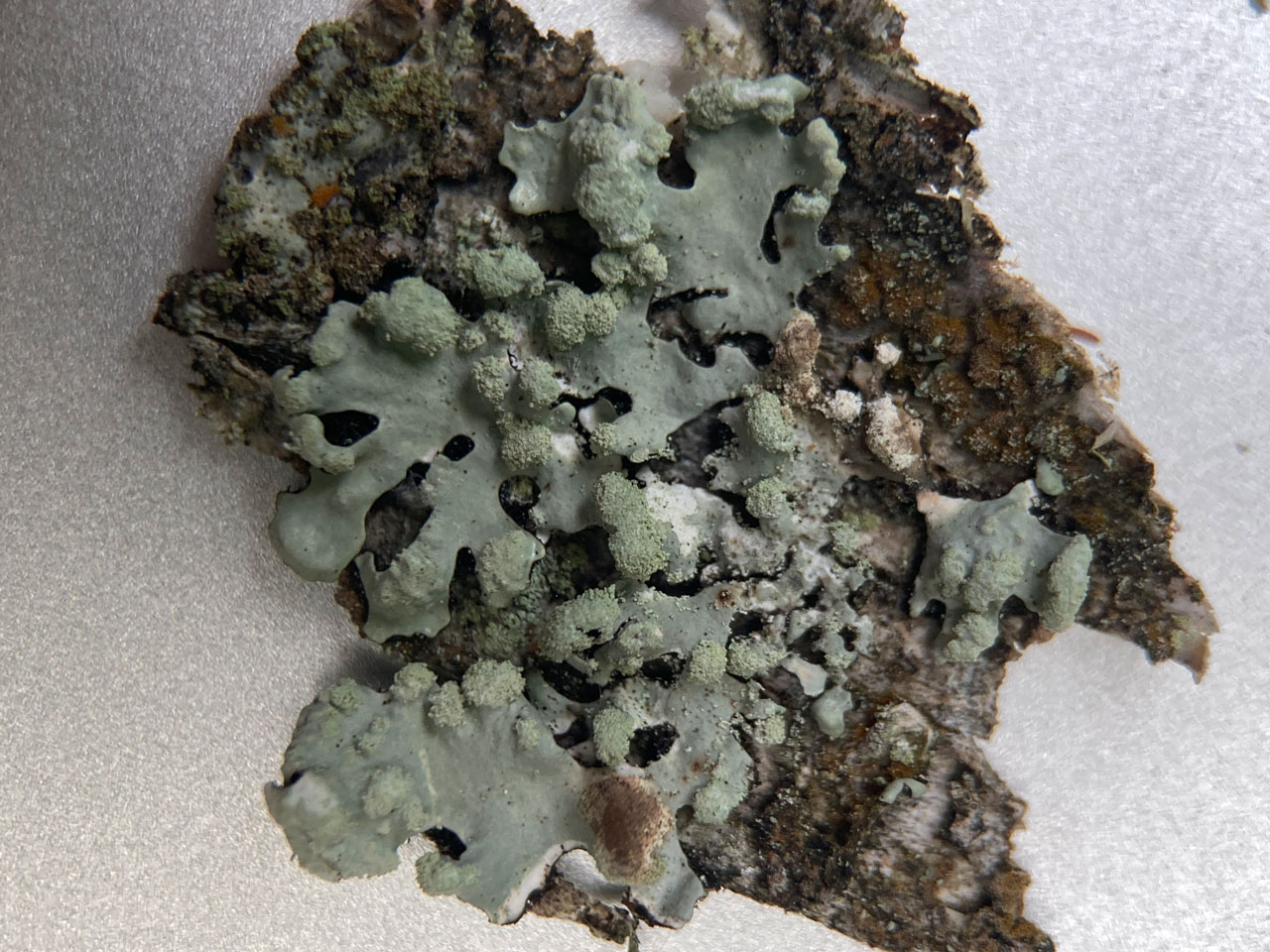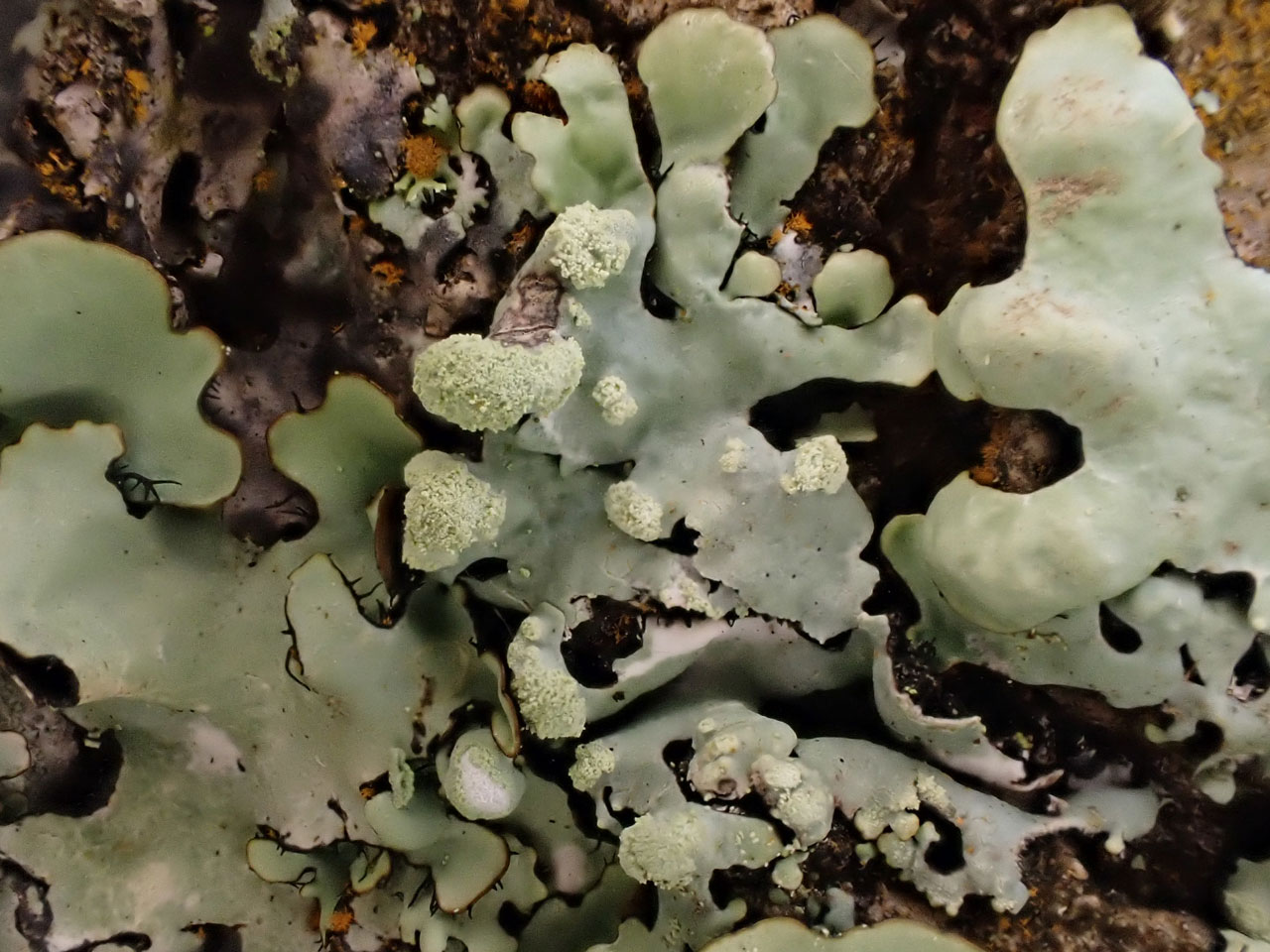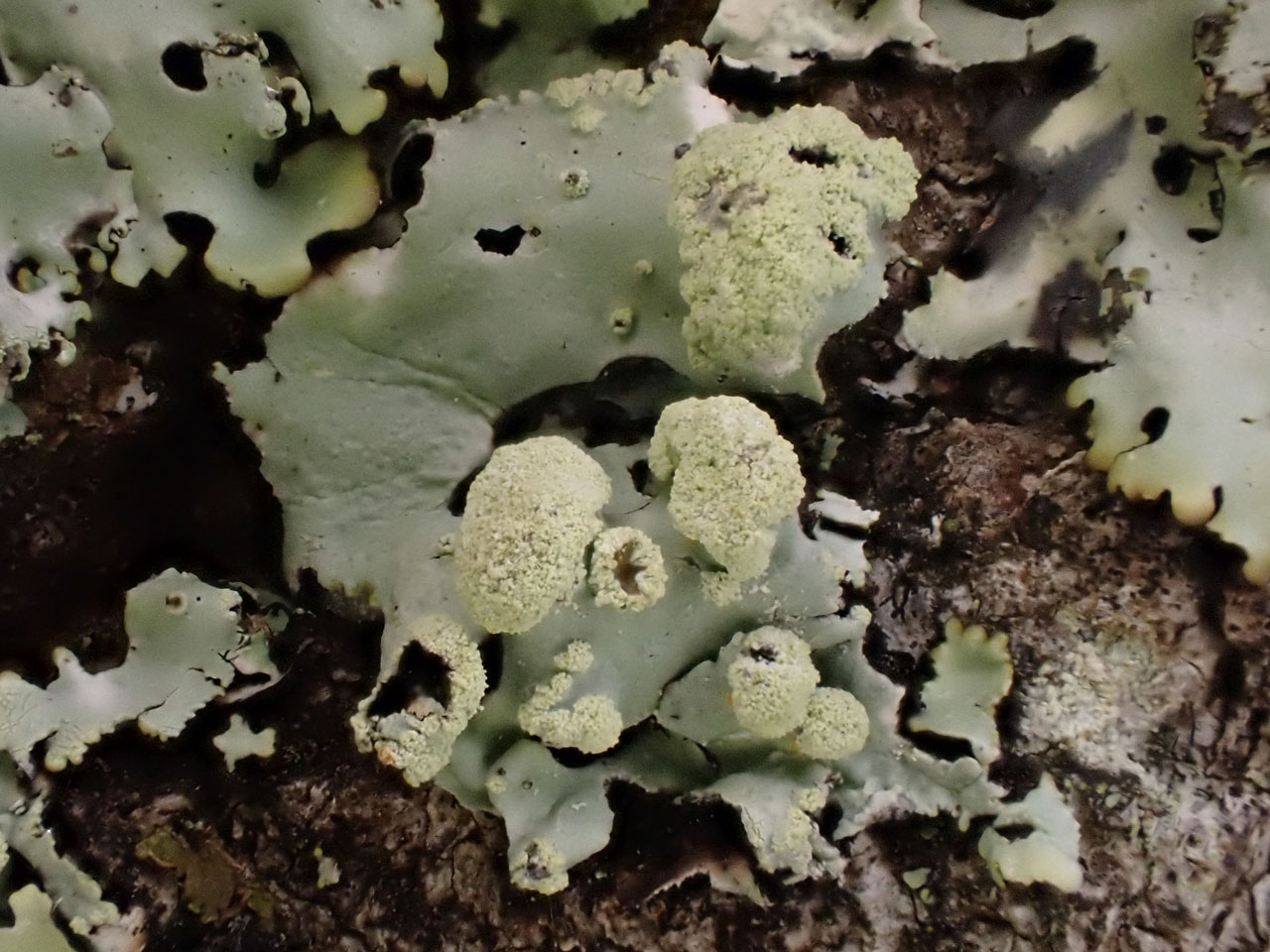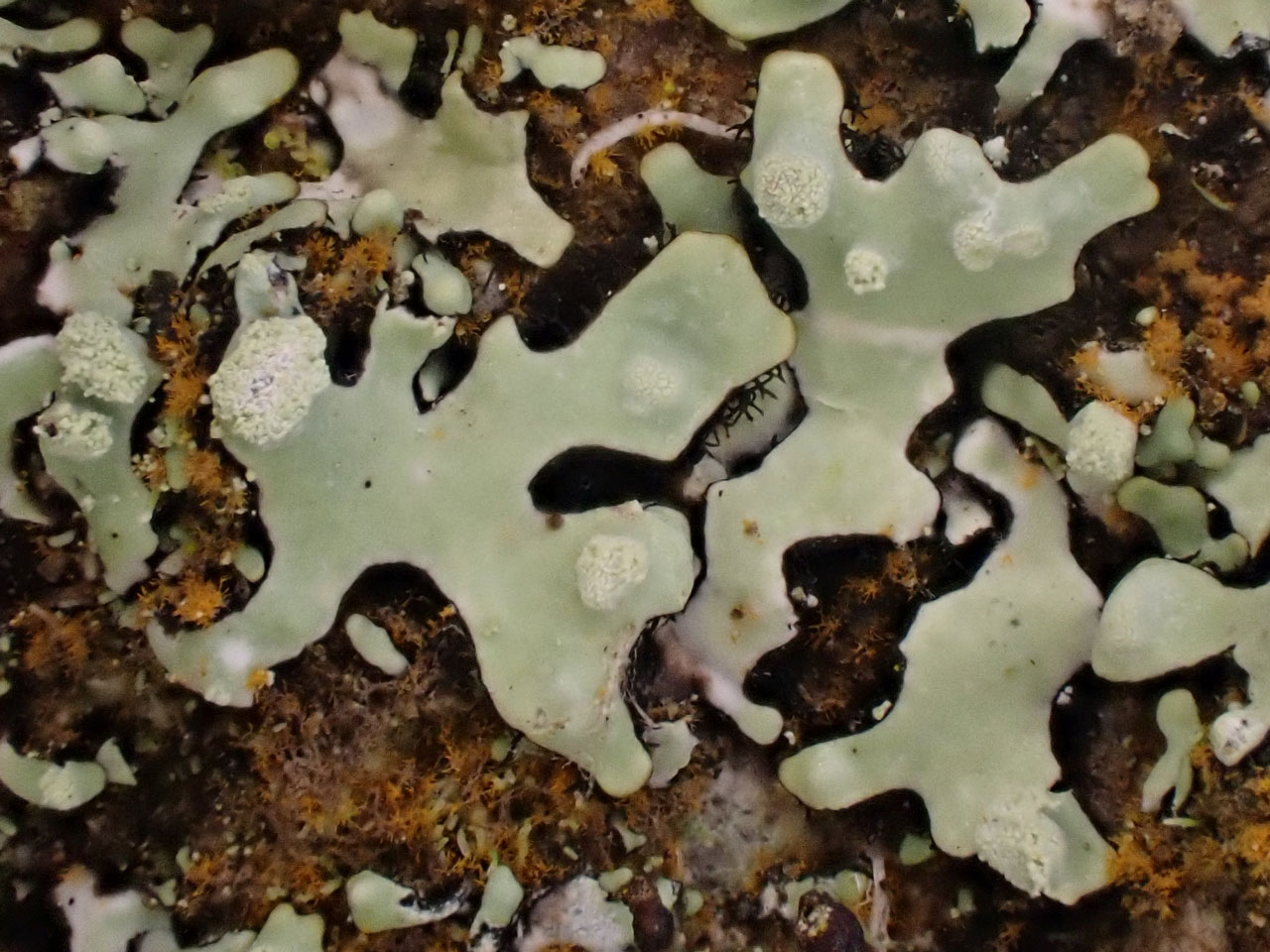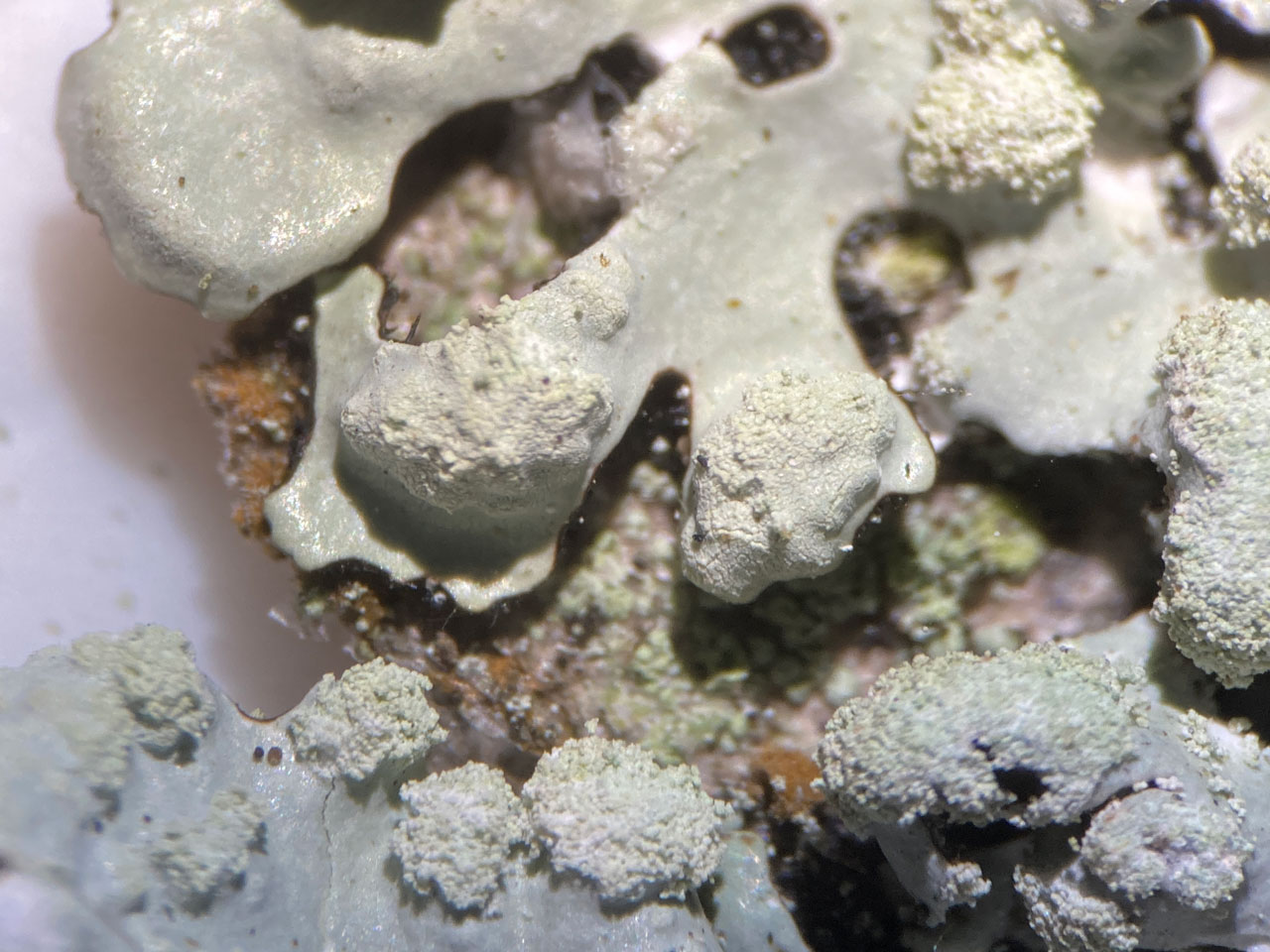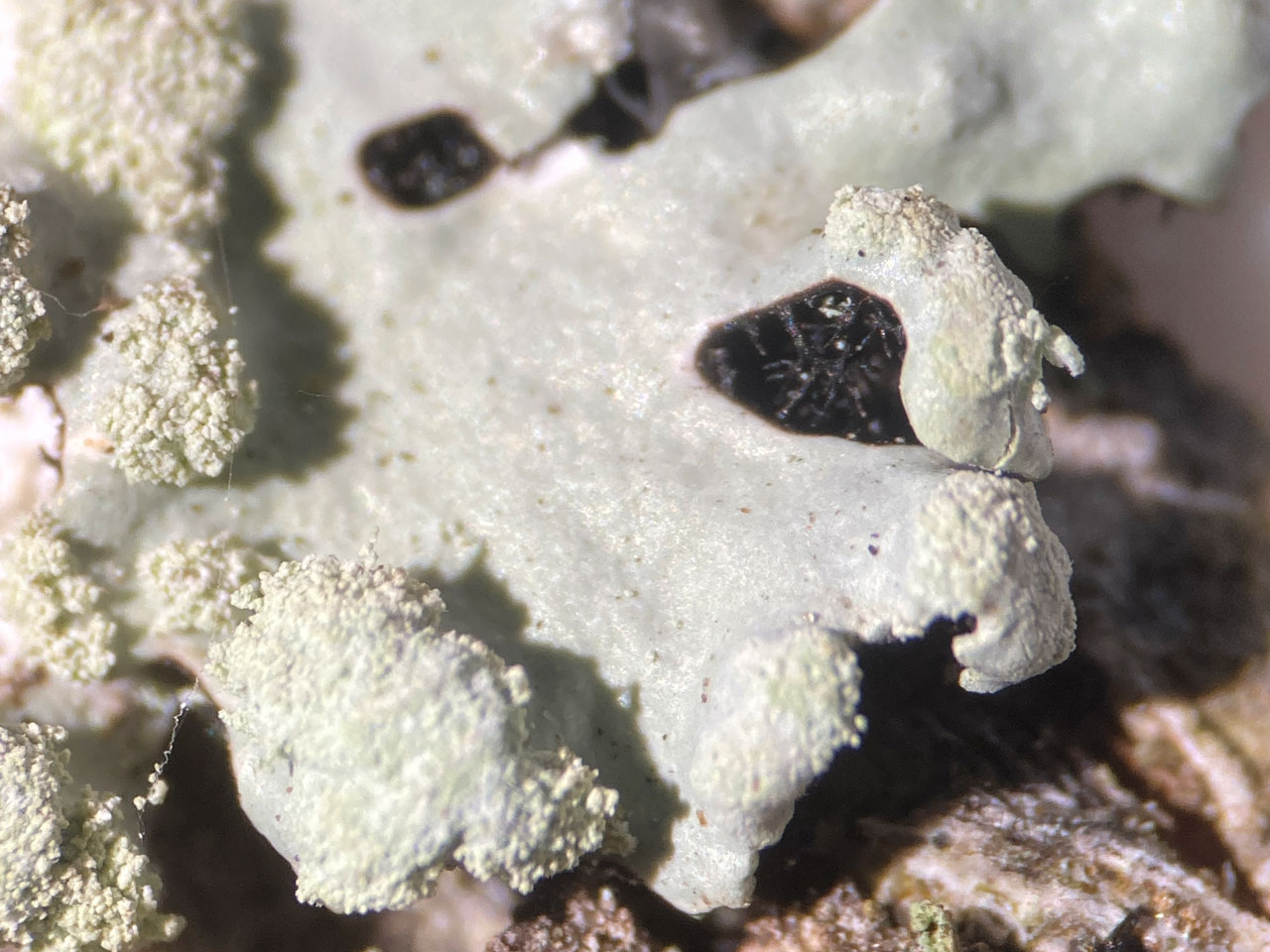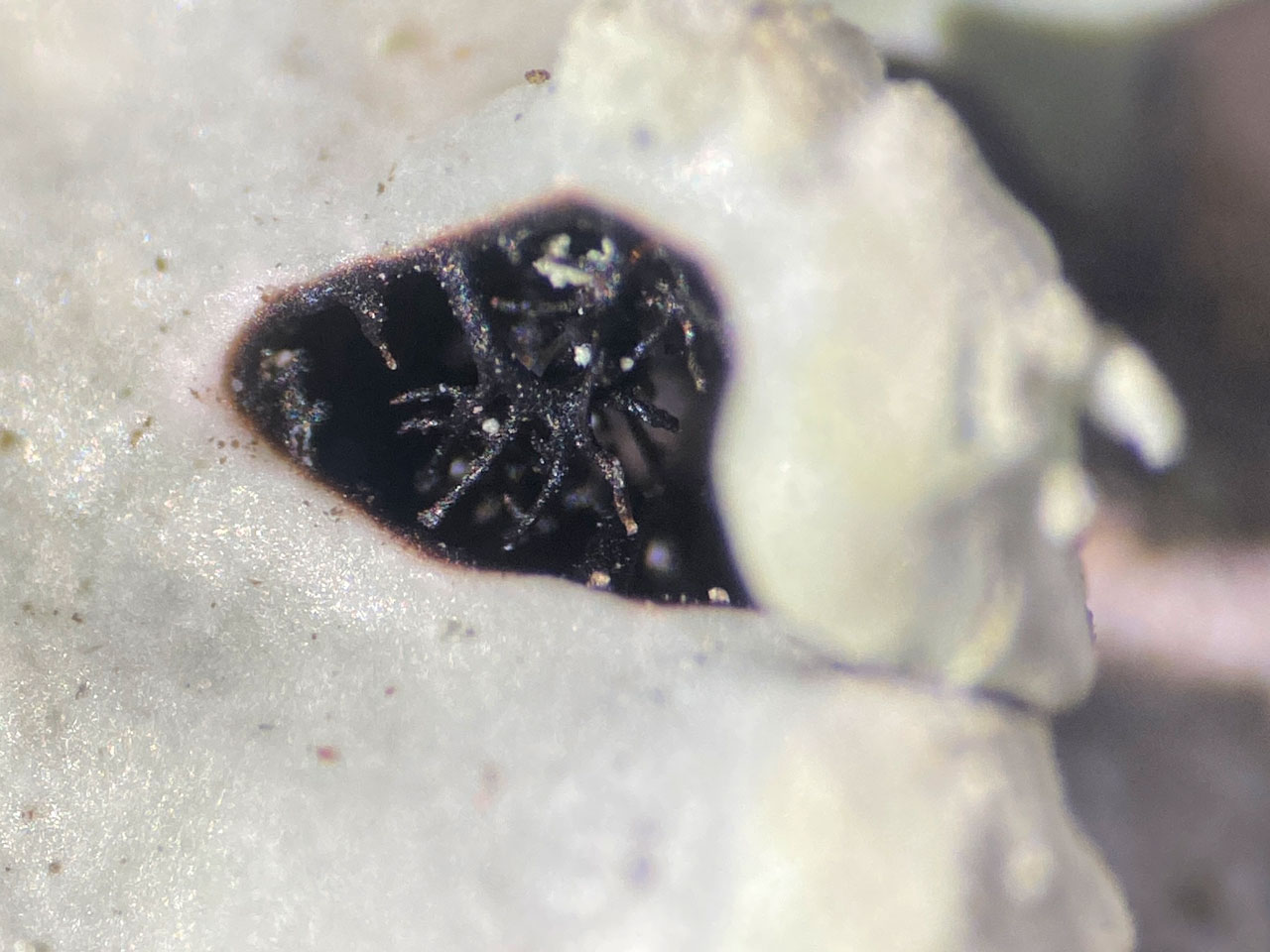Hypotrachyna lividescens
An attractive Hypotrachyna discovered in Britain in Hampshire in 2023 and then in Cornwall in 2024. Similar to the common Hypotrachyna afrorevoluta and Hypotrachyna revoluta s. str., but the thallus more ash-grey in colour, with lobes with rounded sinuses and very distinctive hemispherical pale grey-greenish soralia, which are situated just below the apices or occasionally laminal. In addition, the medulla is C+ red then fading to orange-red and the rhizines short but dichotomously branched.
It is a warm temperate – tropical lichen recently discovered as growing in France as far north as Brittany. It is likely a recent colonist spreading north with warmer summers. It has been found in humid sheltered habitats on open trees and bushes. The lichen should be looked for in similar habitat elsewhere along the south coast.
Thallus loosely adnate, forming rosettes to a maximum of 9 cm diam; lobes 1 to 4 mm broad, more or less branched dichotomously or irregularly and separated by rounded sinuses, ends of the lobes truncated or sub-rounded and more or less crenate; upper surface ash-white, soralia laminal or subterminal, orbicular or subcapitiform, occasionally more or less confluent, whitish mealy soredia, rarely greenish; underside black, chestnut towards the end of the lobes, quite shiny; rhizines black or dark brown, more or less shiny, quite short, strongly squarrose. Apothecia not seen in Britain; disc up to 8 mm in diameter, with a crenate and sorediate thalline margin. Ascospores 9 – 13 × 5 – 8 μm, ellipsoidal. Cortex K+ yellow; medulla K–, C+ red then orange-red, KC+ orange-red, Pd– (atranorin (minor), chloroatranorin (minor), olivetoric acid (major), anziaic acid (minor or trace), pigmentosin A (minor or trace), traces possible 4-O-demethylmicrophyllinic acid.)
Could be over looked as Hypotrachyna revoluta, but characterised by the paler ash-white, hemispherical pale grey-greenish soralia, the squarrose rhizines and the C + red then orange-red medulla reaction.
On relatively acidic bark on young to maturing trees and on bushes on trunks and branches in humid sheltered habitats, including parkland and scrub in floodplain grassland in Parmelietum revolutae communities. Appears intolerant of nutrient enrichment. Recorded on Birch, Sallow, Oak & Domestic Apple in Britain but noted from many other species in France, where it is also rarely recorded on acidic rocks.
Associated species on Birch in Hampshire: Hypotrachyna afrorevoluta, Flavoparmelia caperata, Hypogymnia physodes, Fuscidea lightfootii, Punctelia jeckeri & Hypotrachyna revoluta s. str. In Cornwall on Oak: Parmotrema perlatum, Parmotrema reticulatum, Flavoparmelia caperata, Flavoparmelia soredians, Hypotrachyna revoluta s. str., Parmelina tiliacea & Parmelinopsis horrescens.

In 2023 & 2024 recorded in Hampshire and West Cornwall; likely to be actively colonising Britain and can be expected elsewhere along the south coast.
Not assessed, appears to be colonising and is unlikely to be threatened, but ammonia pollution will limit the potential extent of habitat.
Masson, D. (2005) Taxinomie, écologie et chorologie des espèces françaises des genres Hypotrachyna et Parmelinopsis (Ascomycota lichénisés, Parmeliaceae). Cryptogamie, Mycologie. 26: 205-263
Text by Neil A Sanderson, partly based on Masson (2005)
